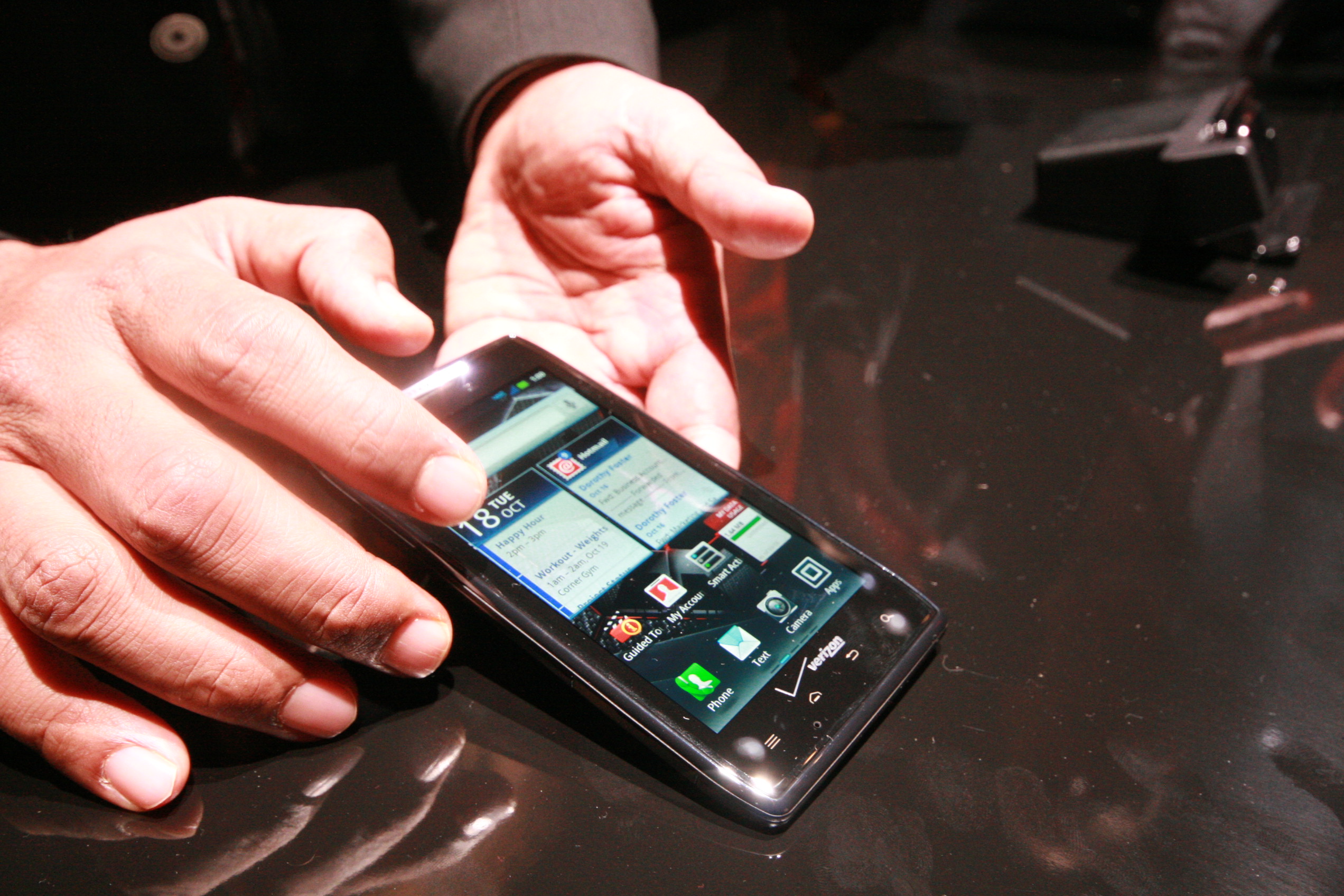Motorola Droid RAZR: an impressive combination of two huge brands (first impressions)

With Motorola's Droid RAZR finally unveiled, here are a few impressions of the device and Motorola's Tuesday event.
The Motorola Droid RAZR 4G
The Droid Razr is a interesting synthesis of two of Motorola's most significant and successful brands. The original Razr is the best selling clamshell phone of all time, and, similarly, Motorola's Droid is probably the most recognizable smartphone brand outside of the iPhone. So it's not an overstatement to say that the Droid RAZR has a lot going for it from just the branding perspective. Hence why its a good thing Motorola didn't succumb to the temptation of slapping a "4G" to the end of the device's name. Doing so would have probably detracted a lot of attention away from what the device really is: a powerful Android smartphone with the design aesthetics of Motrola's best clamshell phone. 4G is important, sure, but it's clearly taking the backseat here.
MotoCast, Motorola's not-quite-iCloud
MotoCast, Motorola's file-streaming app is an interesting feature. Stepping away from the iCloud-esque model of storing user data on remote servers, MotoCast simply establishes a link between a user's computer and phone. Other than that, MotoCast functions just like any other cloud service in the sense that it doesn't work quite as well when users aren't connected to the internet. Fortunately, MotoCast allows users to download selected files directly to their devices, which is a big help during those increasingly rare times when a connection is not available.
Smart Actions: A smart move
Another one of Motorola's more compelling features for the Droid RAZR is Smart Actions, Motorola's Tasker-esque app. Designed to conserve battery life, Smart Actions purpose is to save battery life by altering the a phone's behavior based on factors like location and current battery life. Users can, for example, direct the app to turn their phone's data connection off when its connected to a Wi-Fi network. Motorola says that using Smart Actions can improve battery life up to 30%, which is a pretty significant number. Judging by the demonstrations I saw, I'd say Smart Actions is a pretty compelling app.
The smartphone price concern
The Droid Bionic marked a pretty disturbing trend. Android phones are getting more and more expensive, crossing the $200 barrier and rapidly moving upwards. That hasn't changed with the Droid RAZR, which will sell for $299 with a two-year contract. It was hard to curb my initial repulsion upon hearing this, and I'm sure many consumers will have the same reaction. As impressive as the Droid RAZR is, it's hard to shake the feeling that $300 is just a lot to ask for a smartphone.
Motorola's Logophilia
Considering how important design is for the Droid RAZR, its a bit odd that Motorola placed not one but two company logos on the device's front. From a branding and advertising perspective, it makes sense, but it's also a move that blemishes the device's otherwise pristine facade. All told, it's a disappointing design decision.
The Motorola Whatever
As nice as the Droid RAZR is, it's still hard to shake the feeling that there is something profoundly wrong with the current state of the Android smartphone. There are just too many of the damn things. In one sense, the flood is choice, and consumers are like bears plucking out the fish that appeal to them the most. But it's also overwhelming because the devices are starting to mentally stack on top of each other. This is largely what fellow ZDNet writer Andrew Nusca referred to in his article on the commoditization of Android.
Even within the narrow constraints of the Droid brand — one carrier, one operating system — there are conflicting options for the consumer, thanks to multiple manufacturers, multiple technologies (3G vs 4G) and different naming conventions. Multiply that complexity across several carriers and vendors — and remove the benefit of the “Droid” branding — and it’s a wonder that customers can even remember which phone they even want. No wonder the iPhone is selling so well — it’s probably the only phone consumers can remember by name.
And he's exactly right. Like Samsung, Motorola's biggest problem is that it has too many balls in the air, and it's hard for both Motorla and its potential customers to juggle them all.
Motorola: Get Rich or Die Tryin'
For some strange reason, Motorola seemed extremely intent on plugging rapper 50 Cent and his music when given the chance. It started with CEO Sanjay Jha's demonstration of MotoCast, during which he played, of all things, a few seconds from 50 Cent's "In Da Club". But that wasn't the last of it. After Jha's demonstrations, two separate representatives both played the same track when demonstrating MotoCast to me. I'm not sure if this was due to some memetic consequence of Jha's initial inexplicable selection or the precursor to some unannounced partnership between Motorola and 50 Cent, but it's funny either way.
